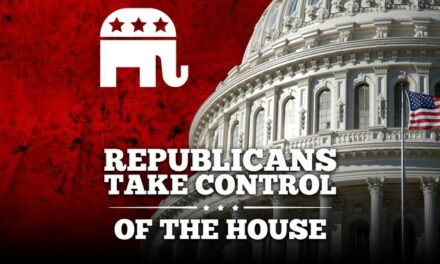We support our Publishers and Content Creators. You can view this story on their website by CLICKING HERE.

Donald Trump ally and probable future cabinet member Elon Musk went out on a limb during the Madison Square Garden rally, claiming he could cut $2 trillion from the budget.
Advertisement
“How much do you think we can rip out of this wasted, $6.5 trillion Harris-Biden budget?” Howard Lutnick, a Wall Street CEO and Trump’s transition team co-chair, asked Musk.
Musk said in response that he thinks “at least $2 trillion” could be cut. It’s a nice round number, but how realistic is it?
If we’re asking if the fat is there to achieve $2 trillion in cuts, the answer is obviously “yes.” If you’re asking if it can realistically be done, the answer is a resounding “no.”
Most of the thousands and thousands of federal programs and departments have a constituency in Congress. Each of those line items in the budget represents human beings: sick people, poor people, old people, babies, and tens of millions of other human beings that would die without federal assistance. That’s the reality for anyone who wants to cut the budget.
That doesn’t mean we can’t cut $2 trillion from the budget. It means we have to get our priorities straight and think rationally about where to cut that $2 trillion. That’s because the very first place Congress wants to cut is programs that benefit the old, the sick, and the weak.
Musk might have pulled that $2 trillion number off the top of his head, but leave it to the brilliant Veronique de Rugy, writing in Reason.com, to put flesh on the bare bones number of $2 trillion.
The best way to cut $2 trillion out of the budget is to ax everything the federal government does that it shouldn’t be doing in the first place. It’s time we rediscovered the exercise of thinking critically about government and the role it should or shouldn’t play in our lives. Questions like, “Is that the role of government?” or “Should the federal government pay for that?” haven’t been seriously considered in years. The muscle of fighting for first principles has atrophied among Republicans as it’s no longer in style to call for small government.
Advertisement
The fact that we’ve “forgotten” how to think critically about government spending only shows that our road to ruin has been paved with fools’ gold. It will take a generation to change the mindset that the federal government needs to do everything and make all of our lives easy.
Even in socialist countries, life is hard. The notion that it’s the government’s responsibility to supply all 330 million Americans with a life of ease is a ludicrous idea.
Once you ask these questions, it’s obvious that most of what the government does, it shouldn’t. For instance, there’s a lot of spending that goes to activities that are supposed to be the states’ responsibility under our federalist model of government. Thus, federal grants-in-aid to the states are the first programs I would cut. These grants assault federalism, create perverse incentives, and reduce state and local government efficiency and accountability.
Indeed, without those grants, states would be forced to raise taxes to pay for the programs they should have been paying for all along. And once states are forced to pay for those grant programs, you’ll see a lot of those programs either disappear or be cut to the bone.
Take, for example, federal grants to state education departments. Federal aid incentivizes schools to shift their priorities to meet federal grant requirements rather than local educational needs. Schools also waste time and money complying with these complex federal requirements. Another example is federal transportation grants, which prompt states to build mass transit systems to get federal matching funds when roads might better serve their communities. There are plenty more examples.
Advertisement
The Cato Institute’s Chris Edwards calculates that “federal aid to the states totaled $721 billion in 2019.” That number has now skyrocketed to 35% of all state budget outlays. Federal assistance to the states came down after the pandemic was declared over, but it still remains elevated.
Private sector subsidies can certainly be cut or eliminated. Market-distorted subsidies such as the EV mandate should also be given the heave-ho.
Several years ago, I calculated that federal “corporate welfare” amounted to approximately $150 billion annually. That number included farm subsidies, manufacturing subsidies, and government businesses like Amtrak. It also included agencies subsidizing private companies, such as the Small Business Administration, the Export-Import Bank, and the Department of Commerce. That number has undoubtedly grown with the Biden Administration’s green energy and billions of dollars for companies like Intel to build semiconductor fabs in the U.S. that they would have built anyway.
We should also look at tax breaks given to private industry. The federal government choosing winners and losers in the market should stop immediately. “Between 2021 and 2024, the cost of these breaks grew from $1.2 trillion to nearly $2 trillion,” writes de Rugy.
Altering the consciousness of Congress and both parties to embrace the historical reasons for the existence of our government is a tall order. I doubt whether Musk or Donald Trump could achieve that in four years.
Advertisement
But if we wait until the budget crisis is upon us, it will be too late to save the republic from its shortsighted, myopic fate.

 Conservative
Conservative  Search
Search Trending
Trending Current News
Current News 







